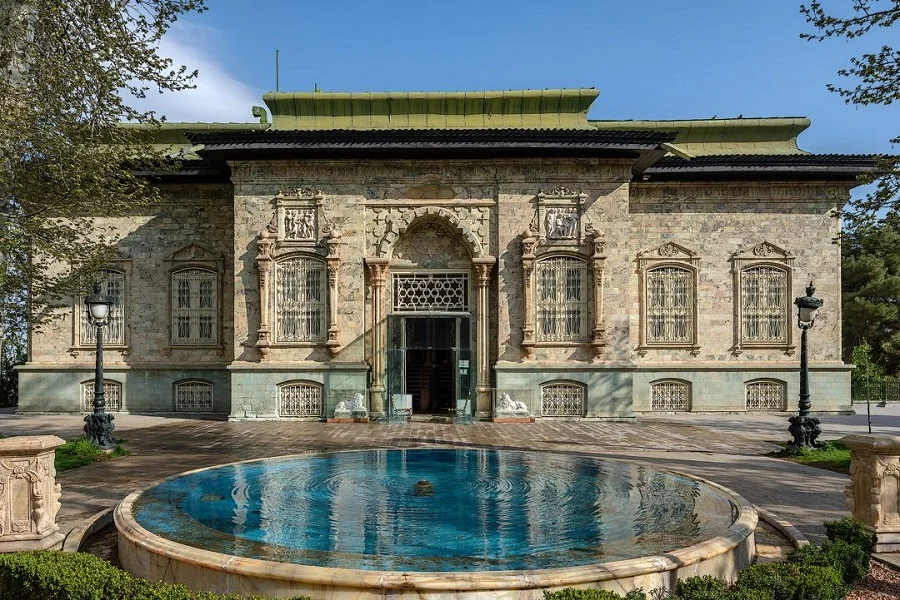
Sa’d Abad Historical Complex
Discover the Sa’d Abad Historical Complex, situated amidst the scenic Tochal hillsides and the lush Darband valley in northern Tehran. Covering extensive hectares, Saad Abad reflects Iran’s rich cultural heritage. Join us on a journey through this historical gem, exploring its fascinating past and architectural wonders.
The Origins of Sa’d Abad Historical Complex
Sa’d Abad Historical Complex finds itself cradled between the imposing Alburz Mountains to the north, Golab-dareh to the east, Velenjak to the west, and Tajrish to the south. This complex, boasting eight entrances, began its life as a summer retreat for the Qajar kings. However, it transformed, evolving into a magnificent summer residence for Pahlavi I following the 1920 coup d’état.
The Saadabad Complex carries a fascinating history dating back to the 19th century during the Qajar dynasty. Initially a garden known as Saadabad, it belonged to a Qajar prince. In the early 20th century, Reza Shah, the founder of the Pahlavi dynasty, acquired the site and transformed it into a royal residence. Under Mohammad Reza Pahlavi’s rule, the complex underwent expansion, featuring the construction of palaces such as the Green Palace, the White Palace, and the Marble Palace. Used as a summer retreat for the Shah and his family, as well as for official state events, the complex evolved. Following the Islamic Revolution in 1979, it transitioned into a museum open to the public. Today, visitors can delve into the palaces and museums within the complex, gaining insights into the lavish lifestyle of the royal family during the Pahlavi era.
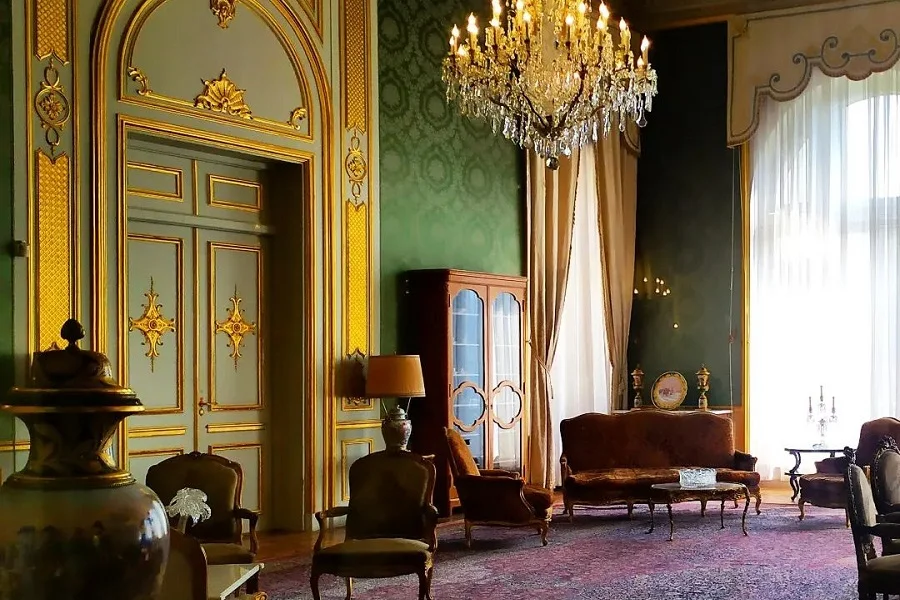
A Palatial Extravaganza
The heart of Sa’d Abad showcases a stunning amalgamation of Qajar and Pahlavi architecture, with a total of eighteen palaces scattered throughout its gardens. Each palace stands as a testament to the grandeur of Iranian art and architecture.
The Complex of Sa’d Abad: Palace-Museums
Some of these palaces have been transformed into palace museums, allowing visitors to step back in time and witness the opulence of bygone eras. The Mellat Palace and the Sabz (green) Palace are prime examples of such palace museums, offering a glimpse into the lives of Iran’s royalty.
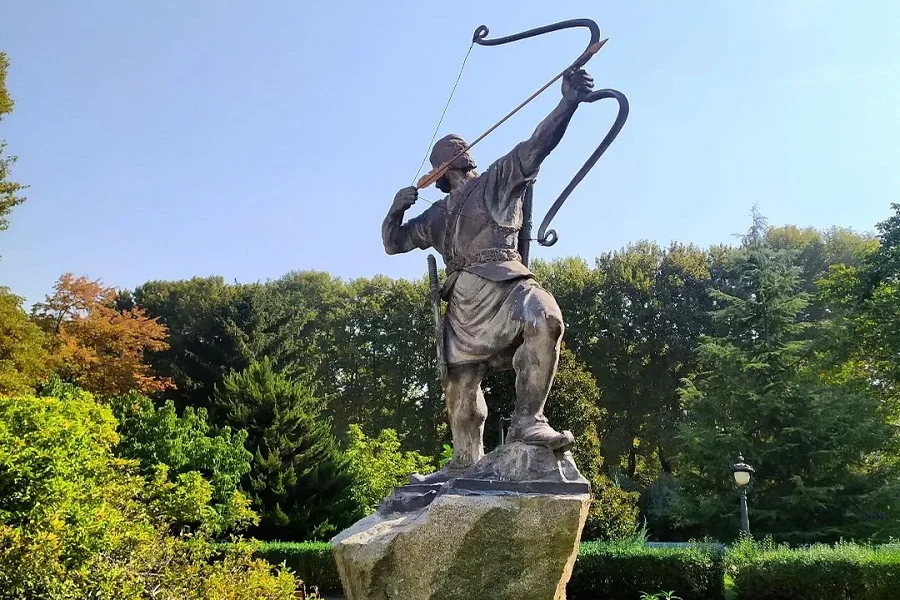
Sa’d Abad Historical Complex Architectural Marvels
Sa’d Abad boasts a remarkable collection of edifices from the Qajar and Pahlavi periods, with 20 of them still standing proudly today. The Ahmad Shahi Palace, for instance, stands as a testament to the Women’s Militia. The Shahvand Palace, also known as the Green Palace Museum, served as the residency of Reza Khan in 1928. The white Palace, aptly named Mellat Palace-Museum due to its pristine white façade, reigns as the largest palace in the complex.
A Palace with Purpose
The Sa’d Abad Historical Complex wasn’t just a royal abode; it was an official and ceremonial palace, as well as a summer residence for both the king and queen. The construction of this architectural marvel commenced in 1928 under the orders of Reza Khan.
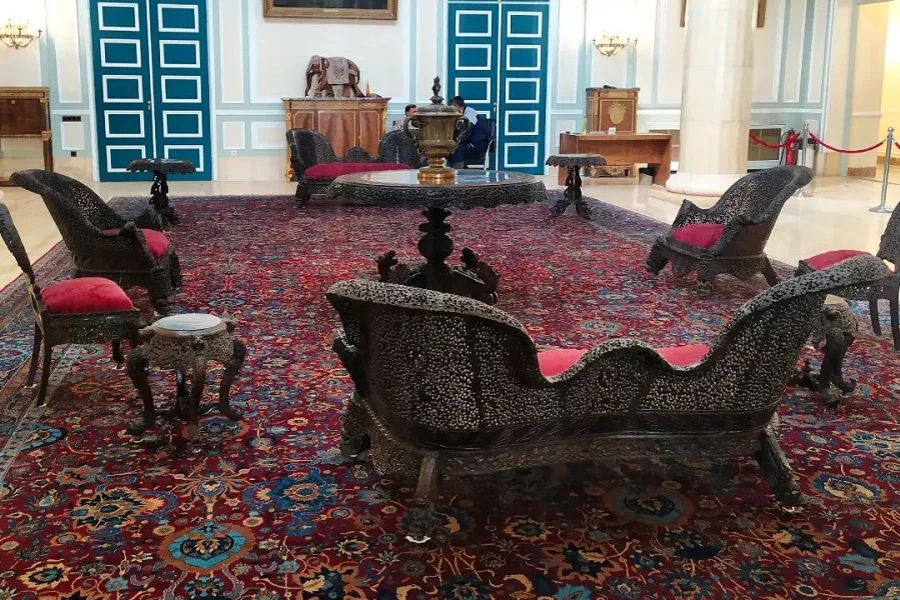
What to Explore in Sa’d Abad Historical Complex Architectural Marvels
For those wondering about the attractions in the Sadabad Complex, the answer is plenty! Situated near the Alborz Mountains, this complex is not just a museum but a delightful journey for visitors. With its vastness, the Saadabad Palace Complex boasts several museums, catering to various interests. The complex also serves as a splendid example of Iranian-style architecture, offering a captivating sight. The expansive garden area and the charming museum environment add to the overall experience. Nature enthusiasts will appreciate the diverse array of plants, trees, and flowers, accompanied by the delightful sounds of birds singing amid the pines and branches.
The Saadabad Palace Complex features multiple museums highlighting different facets of Iranian history and culture. Here, we provide brief introductions to a few of the palaces:
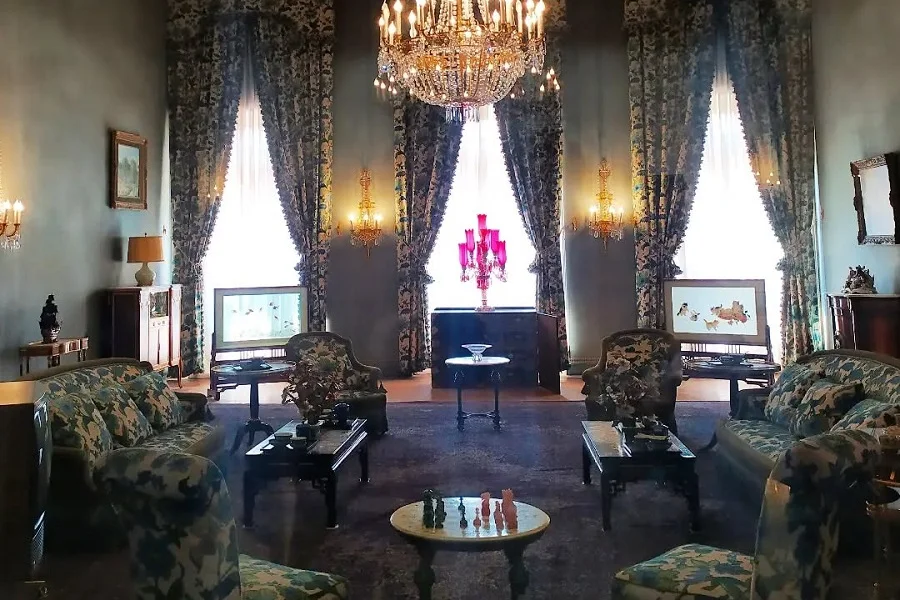
White Palace (Melat Palace) at Saadabad Palace Complex
Melat Palace, also known as the White Palace, served as the summer residence and office of the second Pahlavi king, hosting official ceremonies. True to its name, the White Palace features a white marble facade, blending French aristocratic style with Iranian art. As the largest mansion in the Saad Abad complex, it showcases exquisite Persian carpets, historical pottery, precious crystals, and European chandeliers. Notably, a statue of Reza Shah’s boots stands in front of the White Palace, a symbol that faced some damage after the 1979 revolution.
Green Palace: A Gem Carved in Stone
This enchanting palace, nestled in the northwestern Saad Abad site, boasts a facade crafted from green stones sourced from the mines of Zanjan and Khorasan. Shahvand Palace’s walls are adorned with intricate mirrors, tiles, and ornamentation. The palace’s ground floor once served as the office of Reza Shah Pahlavi, featuring an array of exquisite antique items. Among them are an elegant dining table and furniture dating back to the Louis XVI era, console tables from the time of Napoleon Bonaparte, and a grand Persian carpet. Adding to its allure, the Green Palace’s walls were adorned by the renowned Persian painter Hossein Behzad.
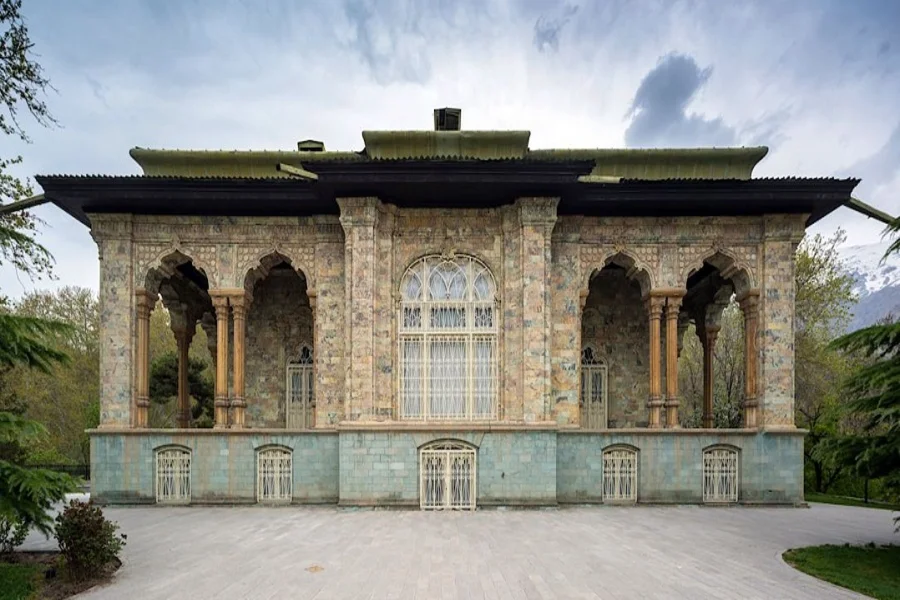
A Treasure Trove of Art, Nations Art Museum
Within the complex lies the Museum of “Nations Arts,” an integral part of the cultural palace museum of Mellat. Originally, it was Farah Pahlavi’s art museum, showcasing a diverse range of artifacts from pre-Islamic and Islamic civilizations, as well as treasures from Africa, India, the Far East, and Maya arts. Visitors can also explore contemporary artworks from Iran and around the world.
Palaces Reimagined, Fine Arts Museum
The private Palace, formerly known as the Museum of Natural History, now belongs to the president’s office. The Asvad (black) Palace, transformed into the Museum of Fine Arts, showcases a captivating array of paintings from various styles and schools. From renowned Iranian artists like Kamal-ol Molk, Suhrab Sepehri, Hussein Mahjobi, and Hussein Zende Rudi to international icons like Salvador Dali, John Friedrich Herring, and Peter Graham – the Asvad Palace houses an artistic treasure trove.

A European-Inspired Gem, Shams Palace
Shams Palace, also known as the Museum Of Art and People, once belonged to Shams Pahlavi. Its architecture seamlessly blends European and Iranian styles, a testament to the fusion of cultures. Initially built by Reza Khan for his twin sister, Ashraf Pahlavi, the palace’s interior was later adorned in French style by foreign artists, while its façade, originally cut stones, now gleams with white marble. Today, it serves as a museum dedicated to “Royal Dishes.”
A Glimpse into Royal Arsenal, Royal Weapon Museum
The Gholamreza Palace, or the Museum of Court Weapons, is a haven for enthusiasts of military history. Housing over 70 guns, including hunting guns, rifles, handguns, and related artifacts, offers a unique insight into the weaponry of Pahlavi II and his court.
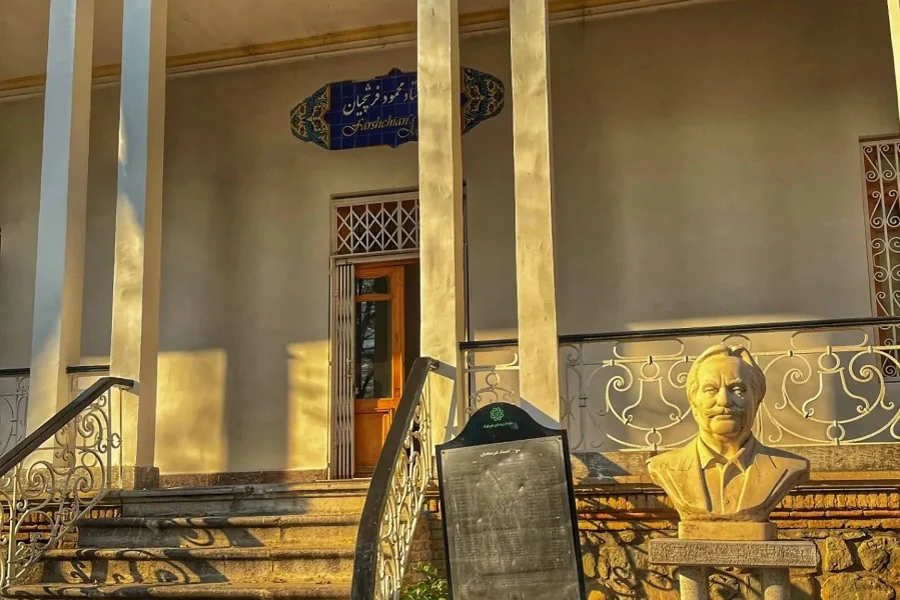
Other Hidden Gems
Sa’d Abad’s treasures extend beyond the aforementioned palaces. you can find the list of the remaining palaces below, which await exploration by curious visitors.
The remaining museums in the Saadabad complex include:
Royal Custom Museum
Master Mir Emad Calligraphy Museum
Master Behzad Museum
Royal Albums and Historical Documents Museum
Water Museum
Royal Cars Museum
Military Museum
Royal Tableware Museum
Master Farshchian Miniature Museum
Omidvar Brothers Museum
Royal Kitchen Museum
Ahmad Shah Mansion
The ideal time to visit the complex?
Visit at any time of the year, as there is no specific season that stands out as the best. Located on the foothills of the Alborz Mountains in the north of Tehran, the complex enjoys a pleasant atmosphere year-round. Whether it’s spring, summer, fall, or winter, you can explore Saadabad Palace. Keep in mind that during the summer, it can get hot, so carrying a water bottle is advisable. For picturesque views of trees and plants, consider visiting in spring or autumn.
Direction to the palace:
Visit Saadabad Complex in the north of Tehran, near Velenjak and Tajrish. The palace is conveniently accessible from two entrances: Zafaraniyeh and Darband. If you’re using a personal car, the Zafaraniyeh entrance is more suitable. Alternatively, you can reach the complex using public transportation such as BRT lines, taxis, buses, and the metro. Plan to spend two or three hours exploring the complex.
In conclusion
The Sa’d Abad Historical Complex stands as a testament to Iran’s rich history and architectural brilliance. Its palaces, each a masterpiece in its own right, offer a captivating glimpse into the lives of Iranian royalty. So, if you find yourself in Tehran, don’t miss the opportunity to wander through the hallowed halls of this historical complex and immerse yourself in a bygone era of grandeur and opulence.

